Devotion – Part 3: Cambodia
Chapter 1: Phnom Penh & Tonlé Sap
The history of Cambodia is as complicated and difficult as could be. Here are some timeline markers to illustrate what I mean:
In the 19th century the kingdom of Cambodia was reduced to a “vassal state” of the Kingdom of Siam, now known as Thailand. In 1862 Cambodia’s King Norodom requested a French protectorate over his kingdom at the time the French were governing Viet Nam.
Fast forward in time, Japan occupies Cambodia during World War II with occupation ending in 1945. The next year France reimposes its protectorate. Communist guerrillas begin an armed campaign against the French.
In 1953 Cambodia wins independence from France. Under King Sihanouk, the country becomes the Kingdom of Cambodia. Another pivotal moment came in 1965 when Sihanouk breaks off relations with the United States and allows North Vietnamese guerrillas to set up bases in Cambodia. He believed that the People’s Republic of China and communism would be the major influence in Southeast Asia. In 1969 the USA begins a secret bombing campaign against North Vietnamese forces in Cambodia.
In 1970 Prime Minister Lon Nol overthrows Sihanouk in a coup. He proclaims the Khmer Republic and sends forces to fight the North Vietnamese in Cambodia.
In 1975 Lon Nol is overthrown by the Khmer Rouge led by Pol Pot and the country is renamed Kampuchea. Pol Pot occupies Cambodia’s largest city and capital Phnom Penh. In this darkest period of Cambodia’s history: “... all city dwellers are forcibly moved to the countryside to become agricultural workers. Money becomes worthless, basic freedoms are curtailed and religion is banned. The Khmer Rouge coin the phrase 'Year Zero'. Hundreds of thousands of the educated middle-classes are tortured and executed in special centres. Others starve, or die from disease or exhaustion. The total death toll during the next three years is estimated to be at least 1.7 million.” – BBC
Pol Pot effectively sealed off Cambodia from the world, which is why you didn’t hear much about that period of Cambodia’s history. I visited the Killing Fields, on which the 1984 movie The Killing Fields was loosely based, and the Genocide Museum in Phnom Penh. For a number of reasons I decided not to further describe those experiences nor show my photos of those places in this webbook. Suffice it to say that atrocities committed by Pol Pot were as extreme as the world has seen and the aftermath of the civil war that ended decades ago continues to affect the Cambodian people. Political upheaval persisted at least through 2018. Cambodia’s development was set back most dramatically by the civil war. Since, the Cambodian people have been striving to catch up with the developments of other countries.
Cambodia is a rural country. In 2018 the total population of Cambodia was just over 16.2 million people. The population of the 23 largest communities, ranging from Phnom Penh at almost 1.5 million to Tbaeng Meanchey with a population of 11,400, made up only 17.4% of the country’s population.
Phnom Penh, the capital of Cambodia
The Mekong River, with headwaters in Tibet, is “estimated” to be 4,350 kilometers long. The river-flow runs through China, Myanmar, Laos, Thailand, Cambodia and Viet Nam. The Mekong is a gigantic river and has gigantic affect with a watershed covering huge areas of Laos, Thailand, Cambodia and Viet Nam. The map below shows the size of the watershed. Note the location of Phnom Penh, Tonlé Sap Lake and the Tonlé Sap River that runs south of the lake.
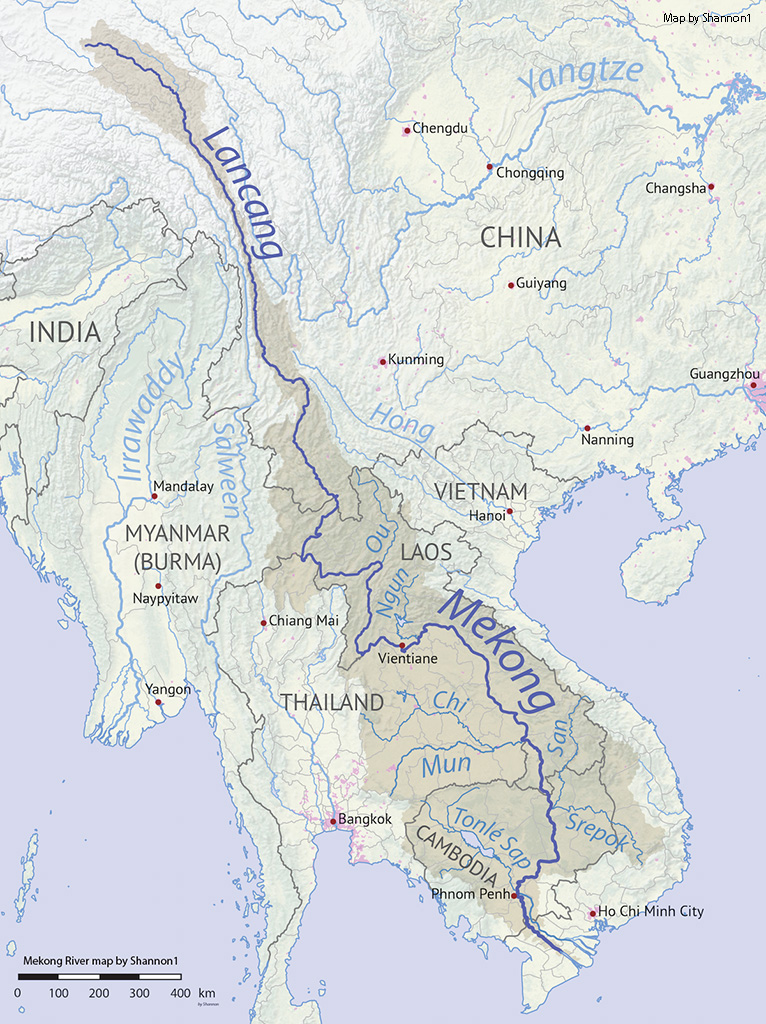
By the time the Mekong reaches Phnom Penh the river is very wide. It serves as a transportation route for both people and products and a major resource for people to live by. Where Phnom Penh and the Mekong meet, the contrast between the city with emerging skyscrapers and river life could hardly be greater. From the river, in a single view, office buildings rise above a shoreline of small boats, many of which seem to also be where families live. Barge traffic and fishing are robust. Commercial shipping routes have been established so that fishing nets used by families that survive on fishing are protected. I was fascinated with the comparison of motored barges when empty and full.

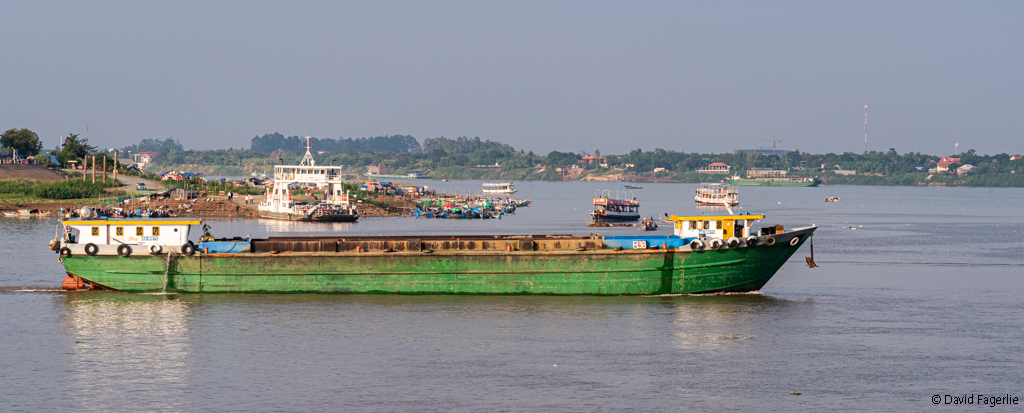
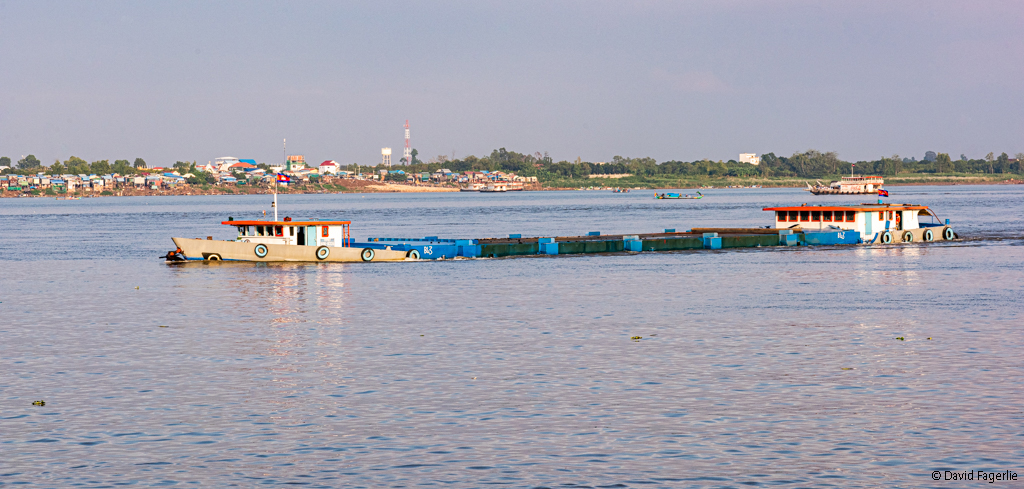
There is litter everywhere. Cambodia has not yet grappled with environmental issues that have long been addressed in the developed world. People seem to accept throwing out waste where they live. Cambodians are very friendly and they enjoy having visitors from other countries. The smile on the girl with a pink blouse could be a poster for how Cambodians relate to foreigners.
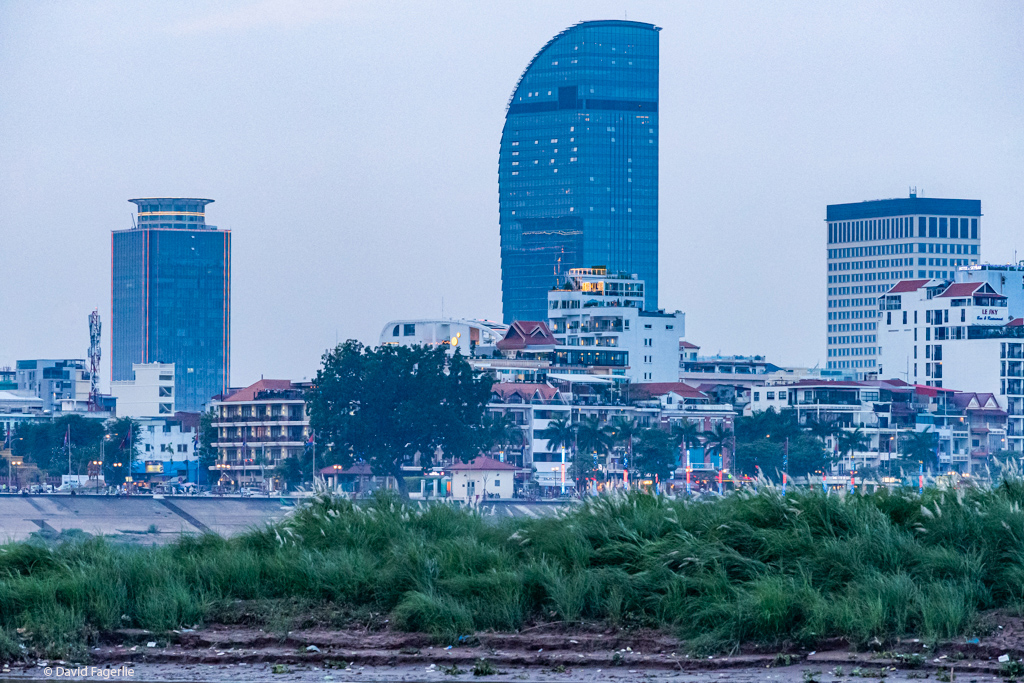
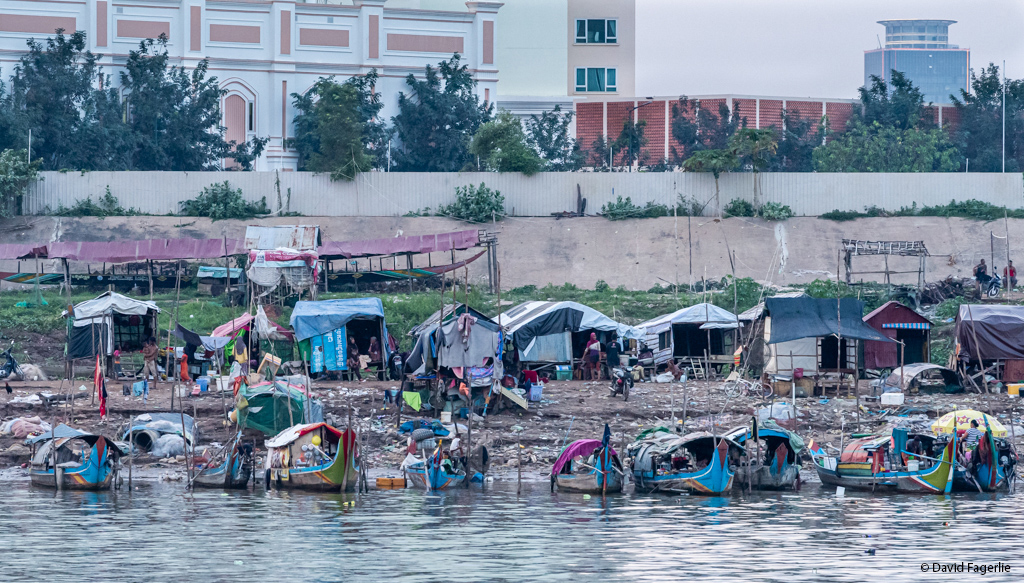
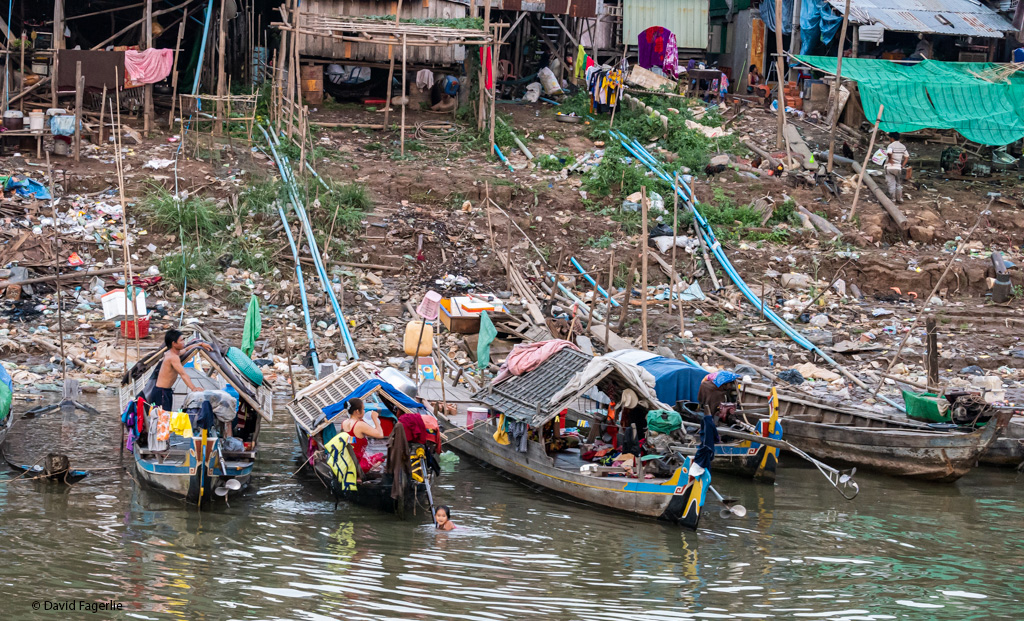
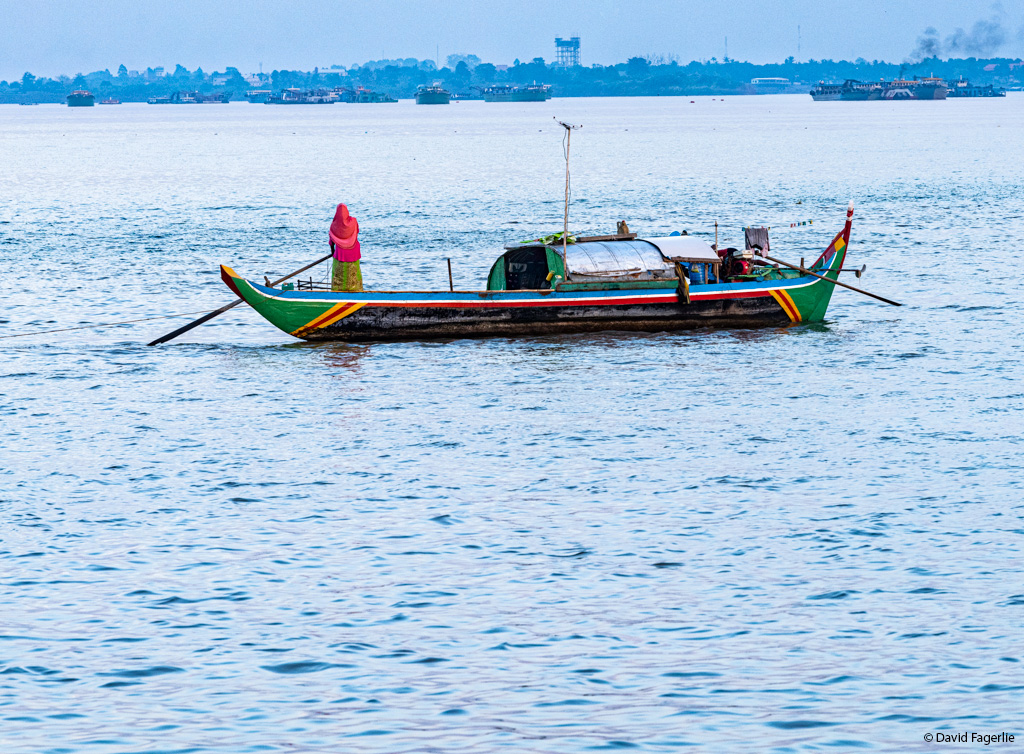
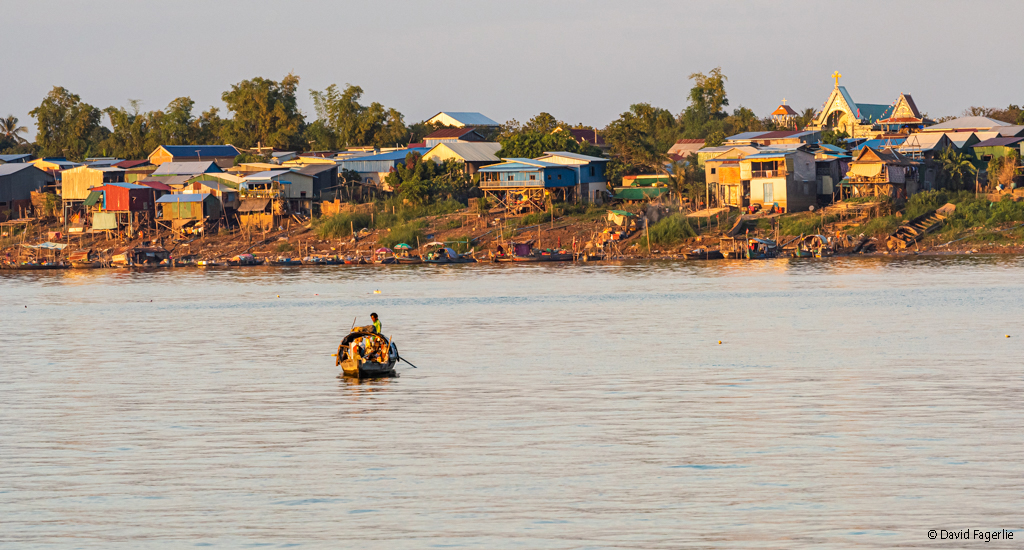
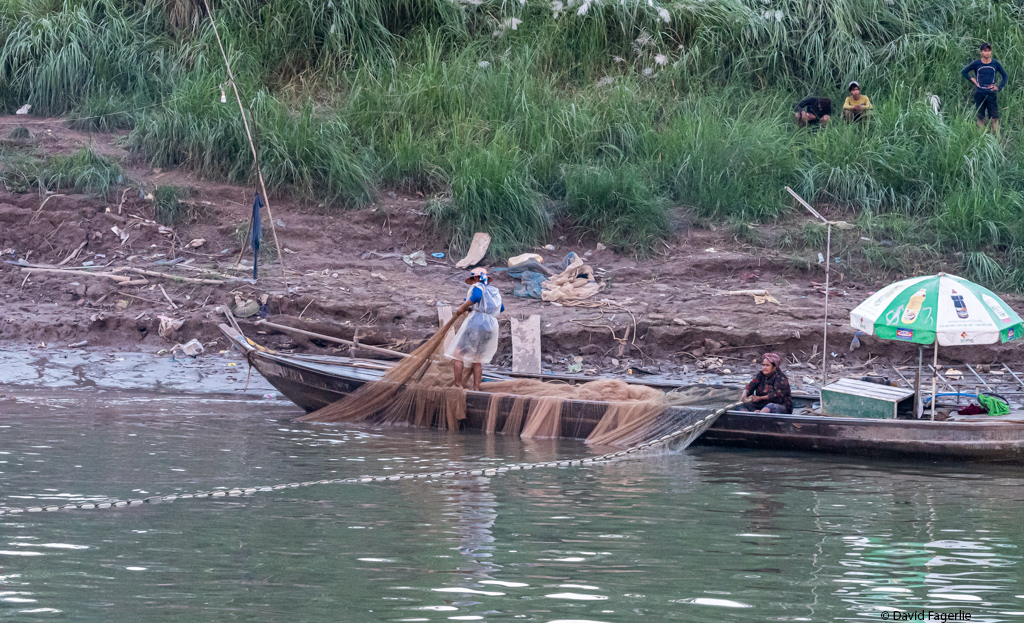
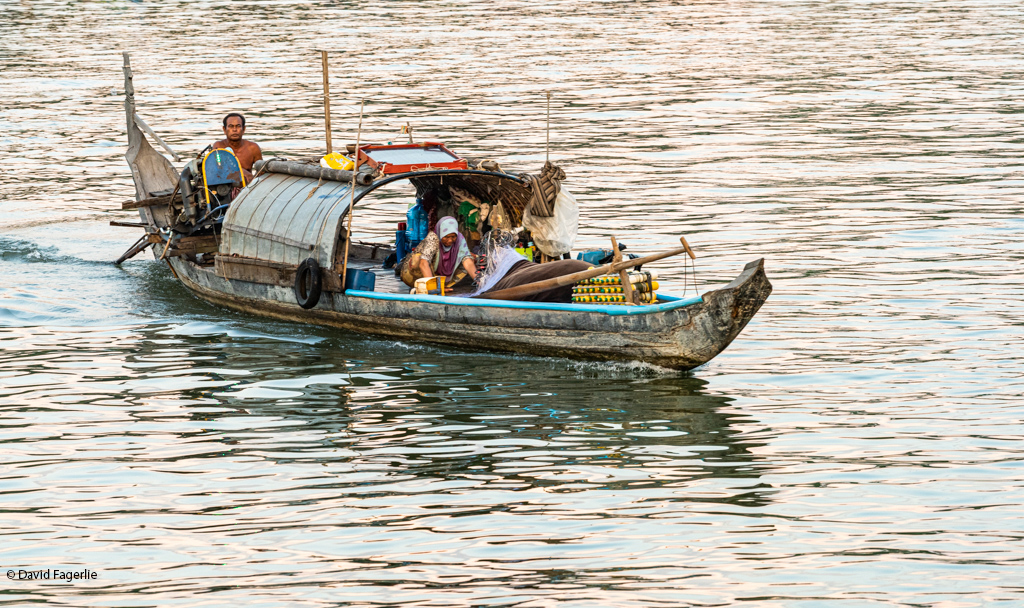
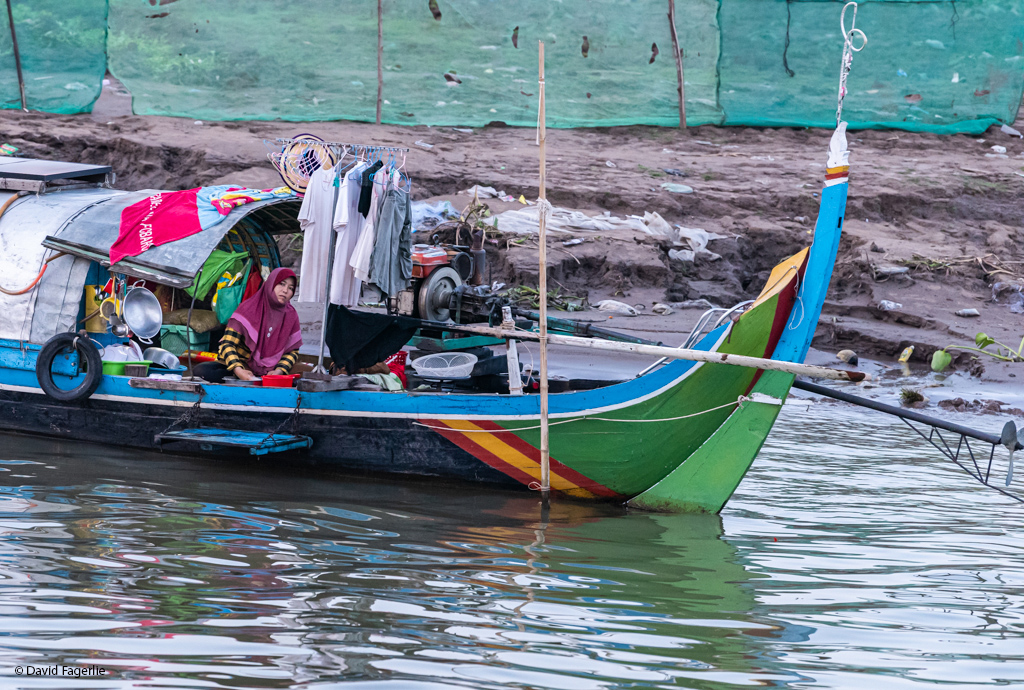
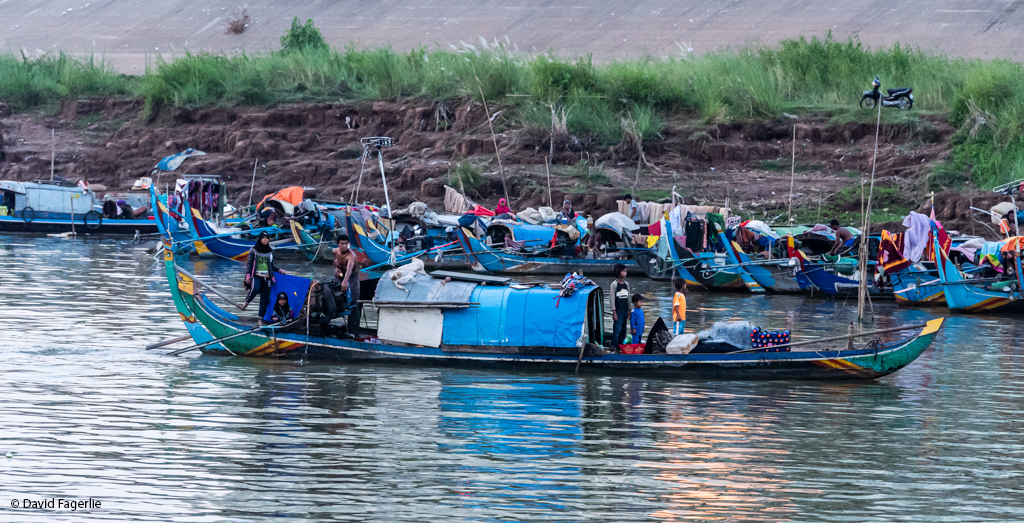

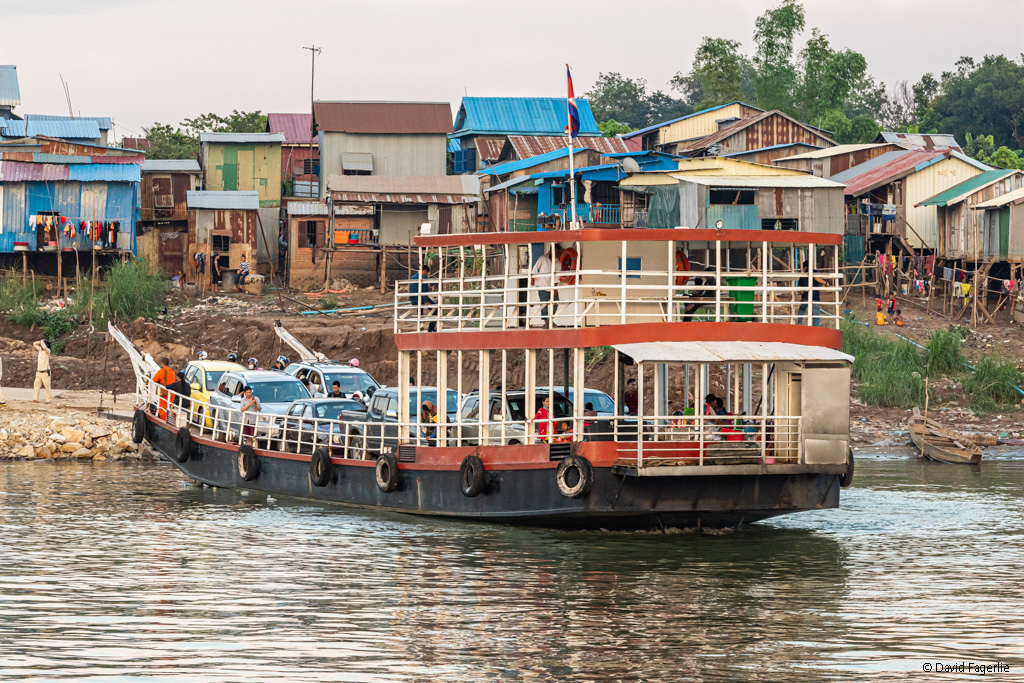
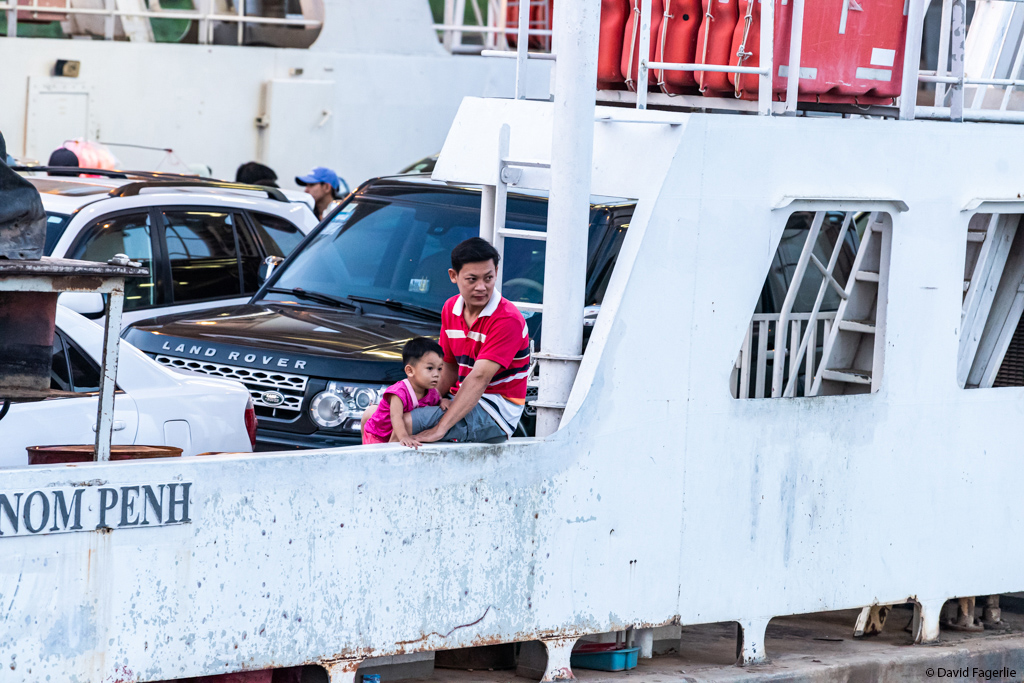
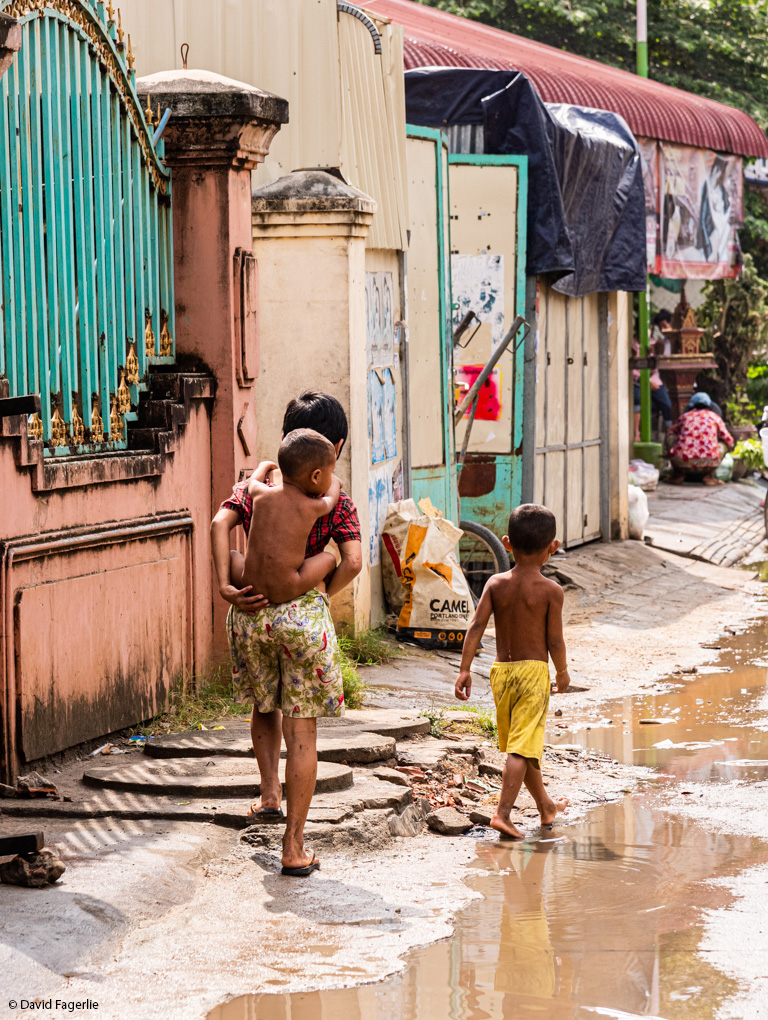
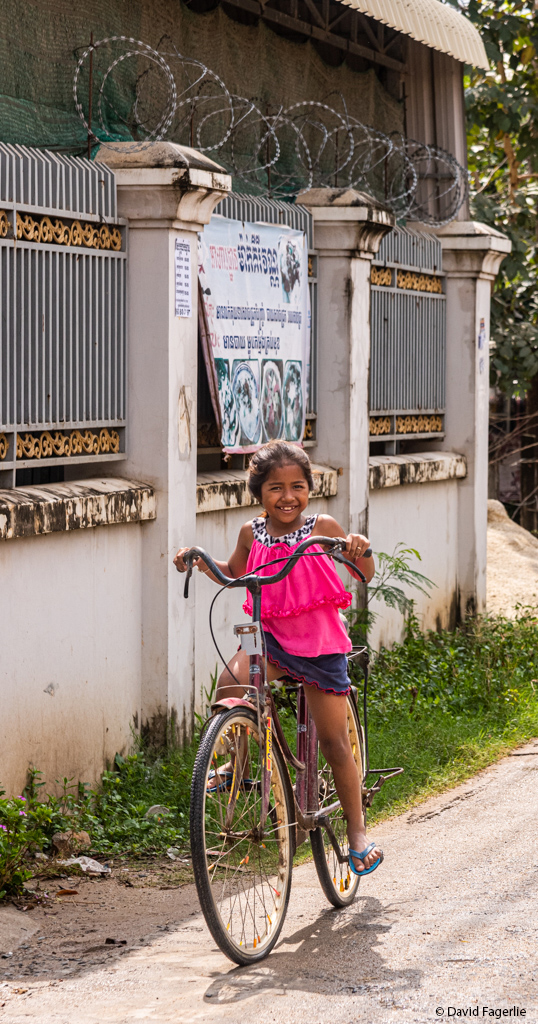
Tonlé Sap Lake
Upriver from Phnom Penh the Mekong River and the Tonlé Sap River intersect. From that intersection, 120 kilometers north on the Tonlé Sap River is Tonlé Sap Lake. Commonly translated, Tonlé Sap in English means “Great Lake.” Great indeed. This huge lake is unusual in that it dramatically changes in size in the course of a year – from about 2,500 square kilometers at the end of the dry season to about 16,000 square kilometers at the peak of the wet season when the lake is 250 kilometers long. On the map of the Tonlé Sap, note the size difference between the lake at its natural state and the floodplain.

From the beginning of the dry season until into the wet season (about six months) the Tonlé Sap River flows south and parts of the lake are completely dry. In the wet season the volume of water traveling down the Mekong arrives with such thrust that the Tonlé Sap River reverses course for six months, flowing north, flooding the lake and raising the water level by up to 45 feet.
Kampong Kleang
On the east side of Tonlé Sap Lake, north of center, is the community of Kampong Kleang with about 6,000 residents. It is built entirely on stilts because of the changes in water level. At the peak of the wet season the water rises to within one meter of the buildings.
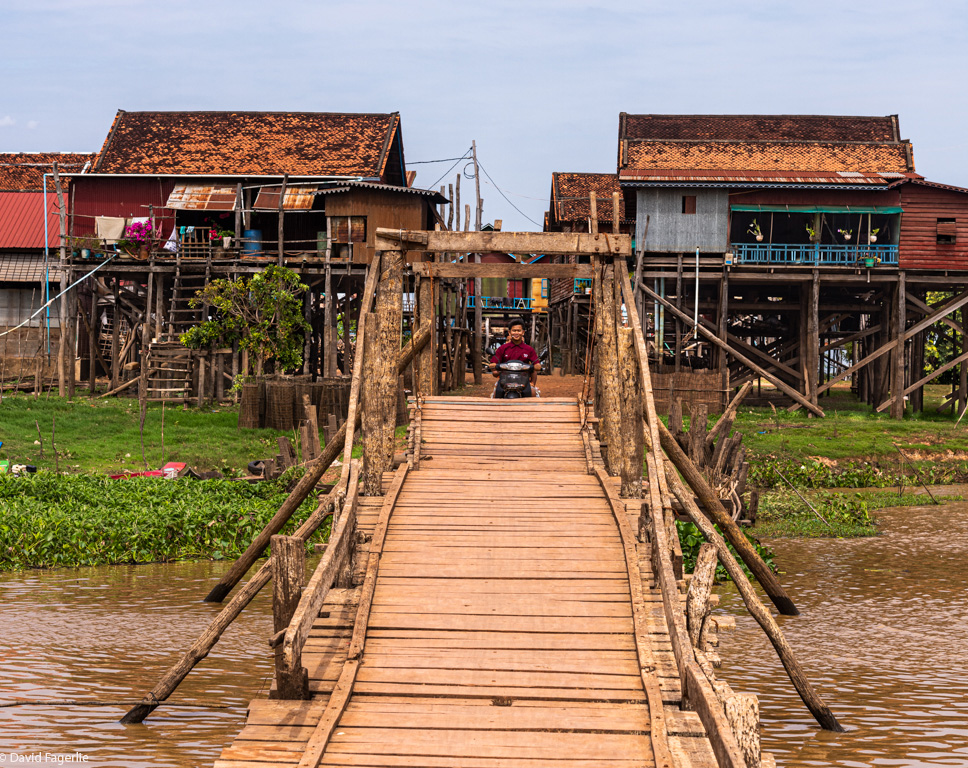

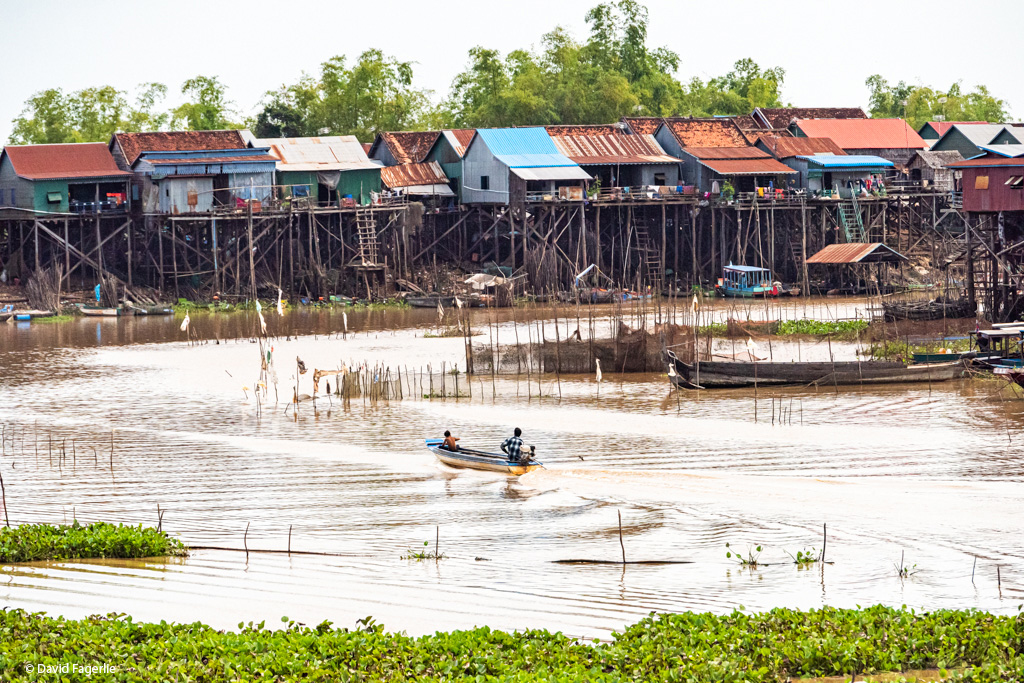
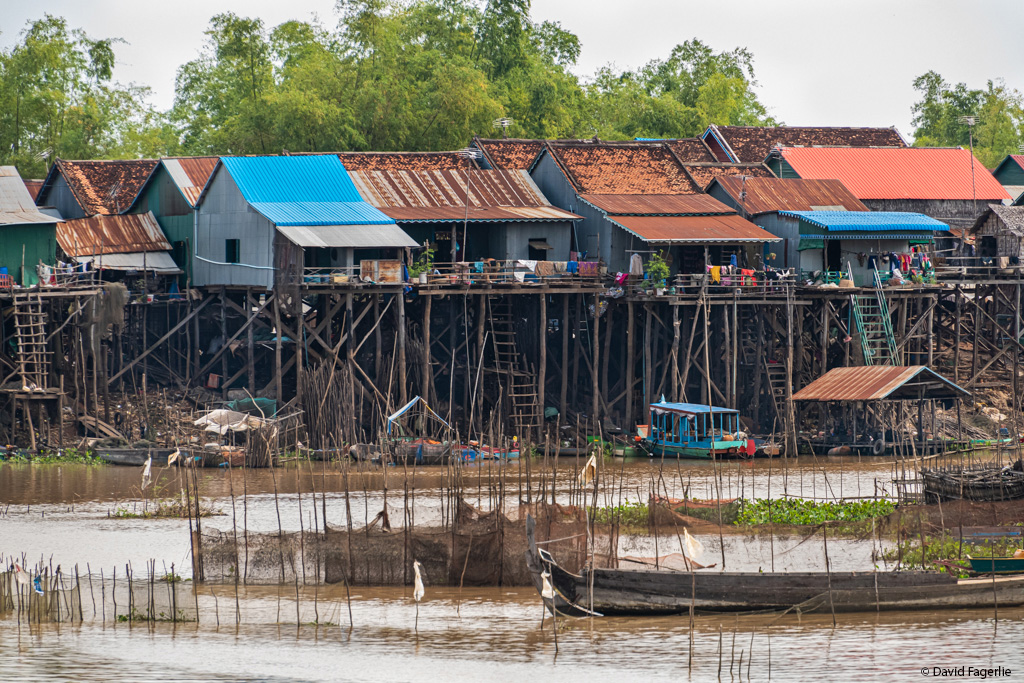
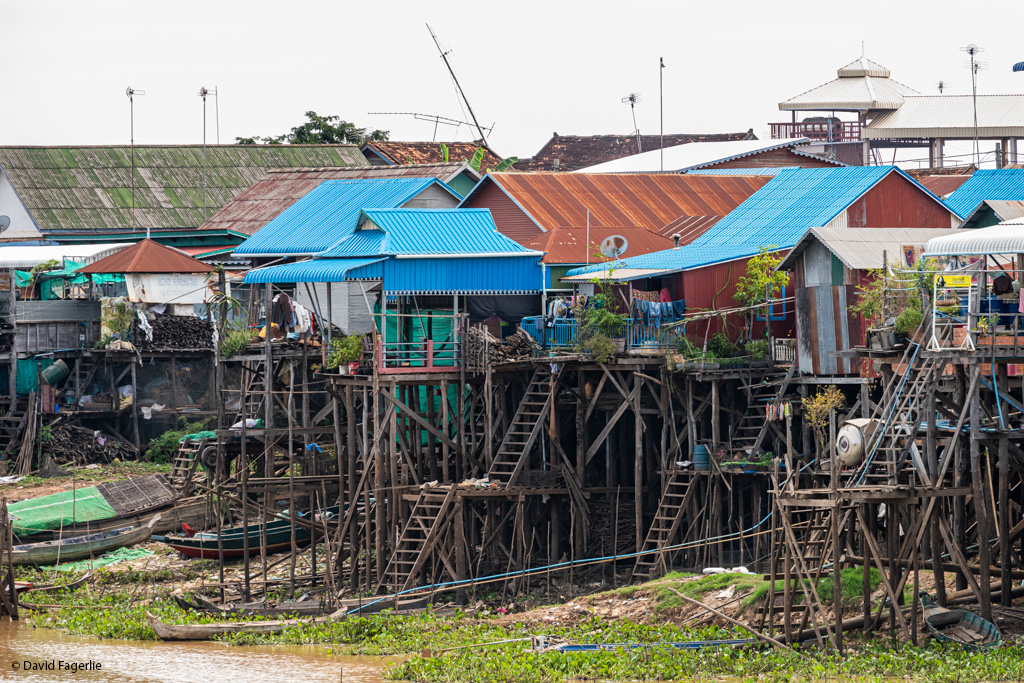
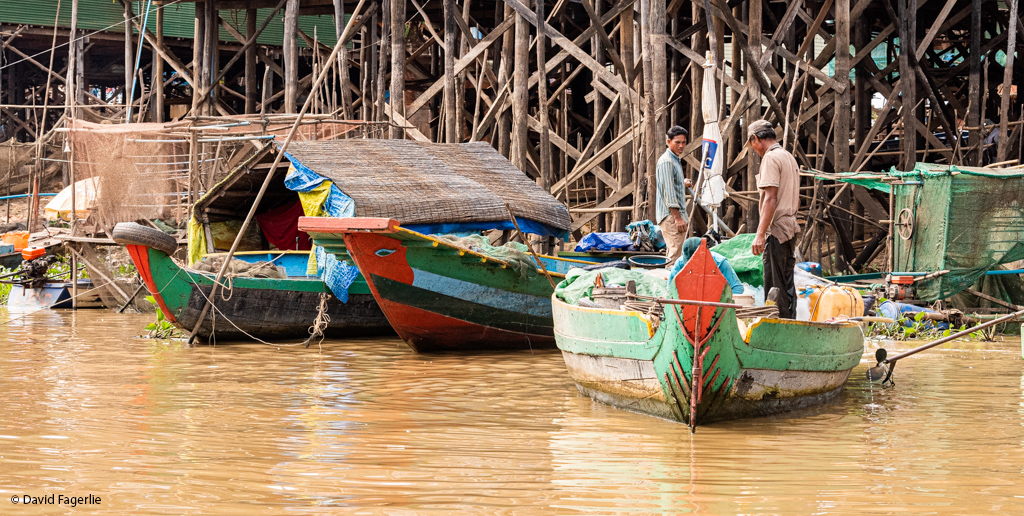
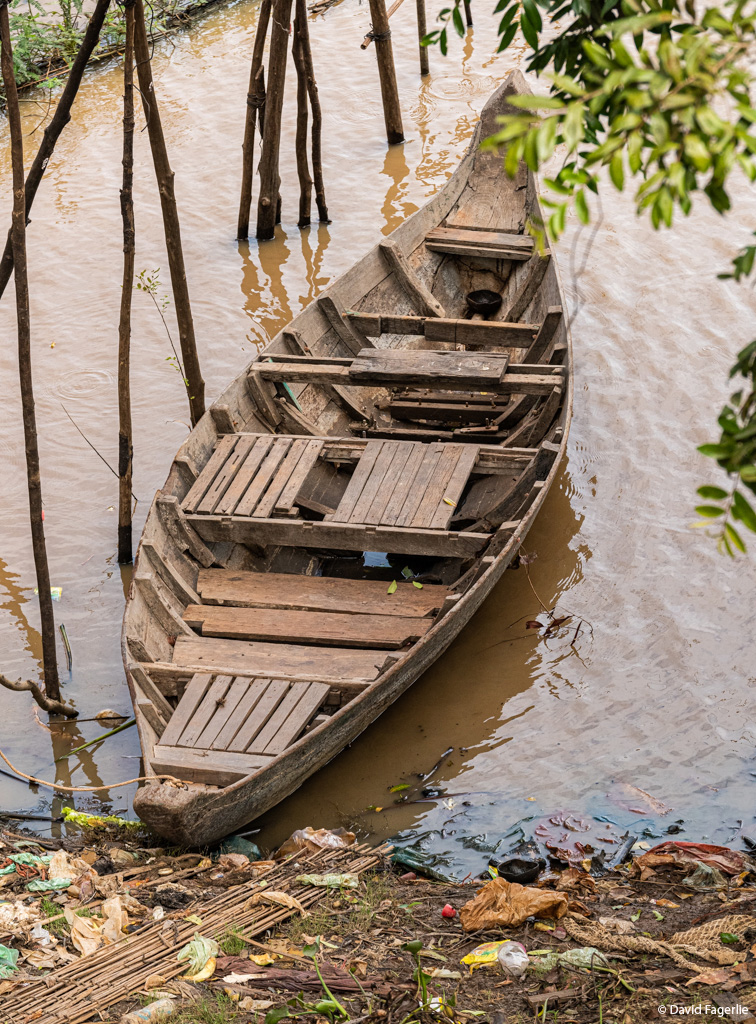
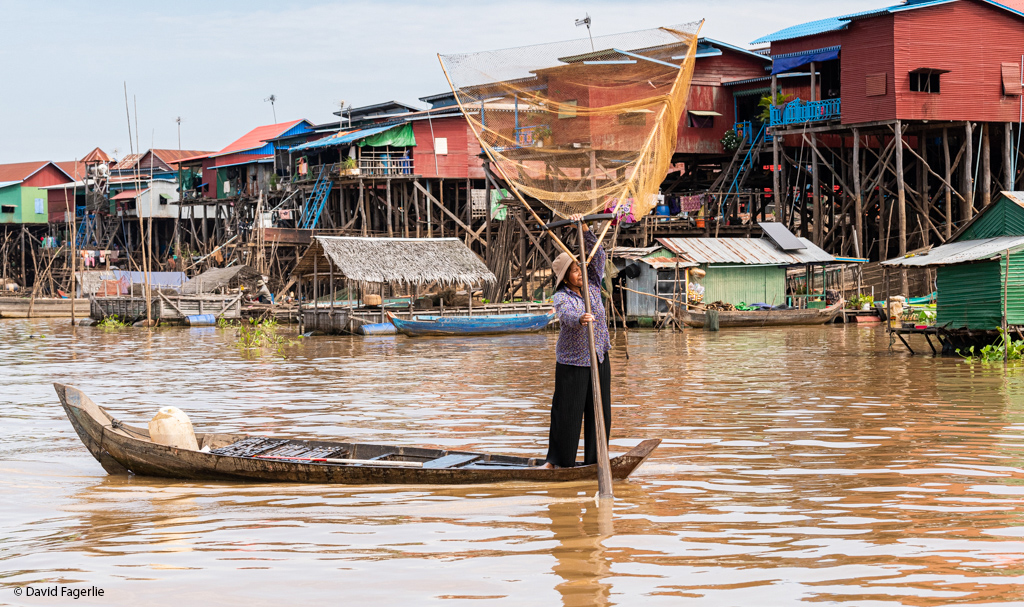
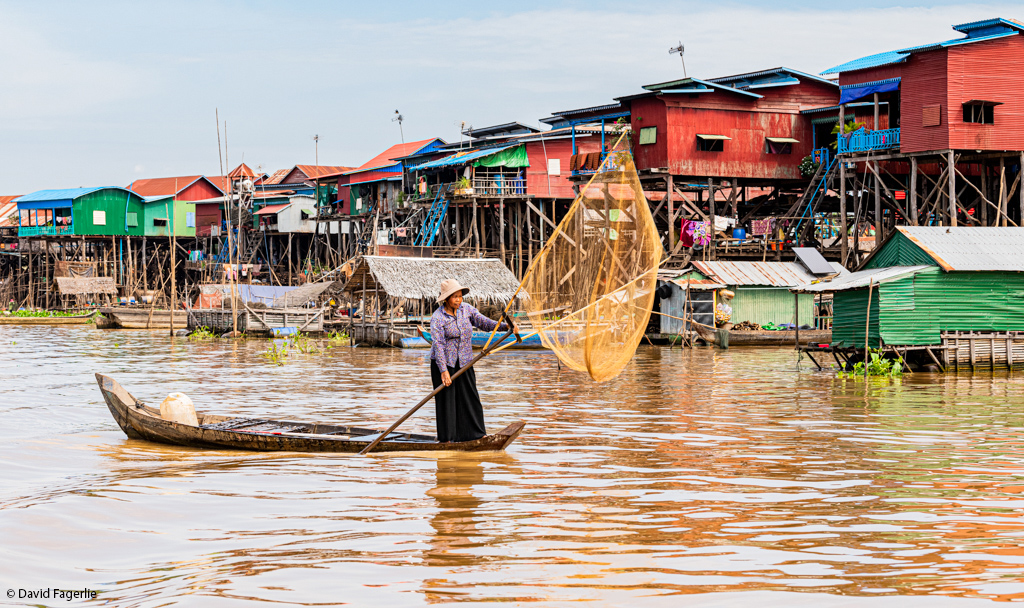
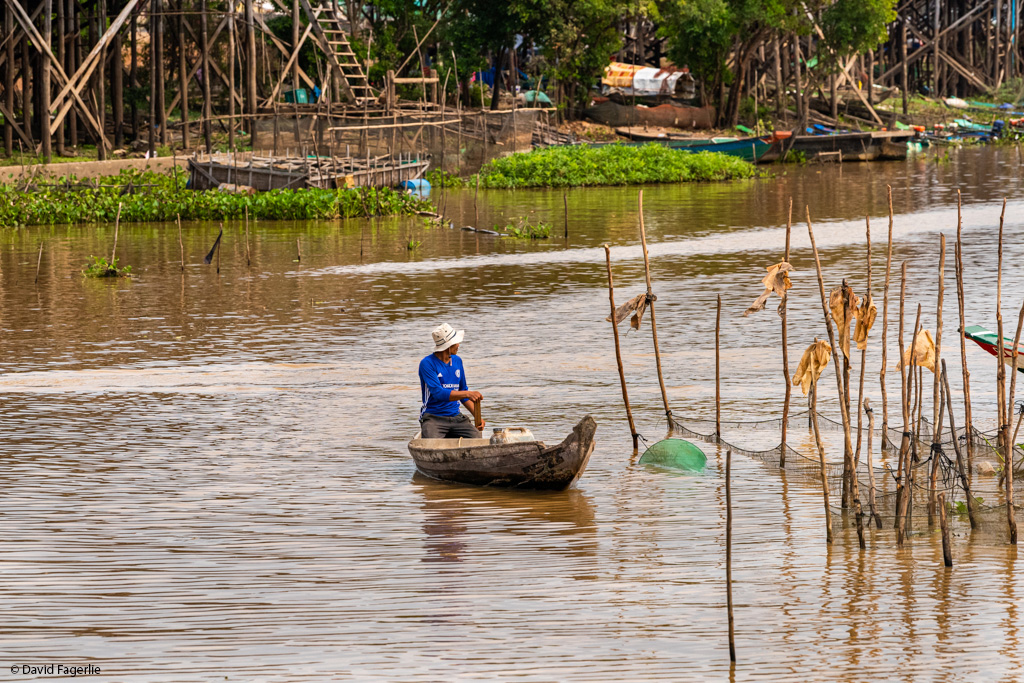
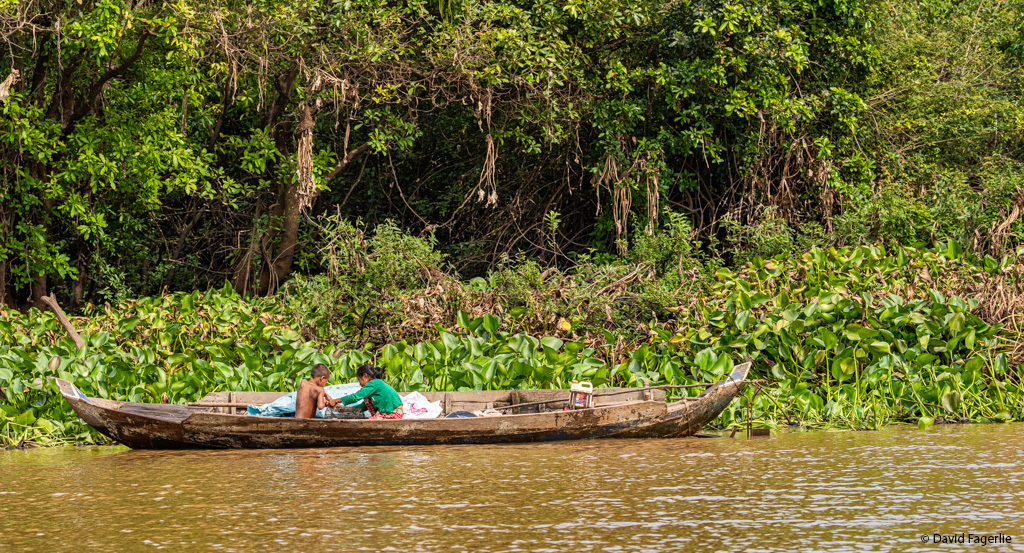
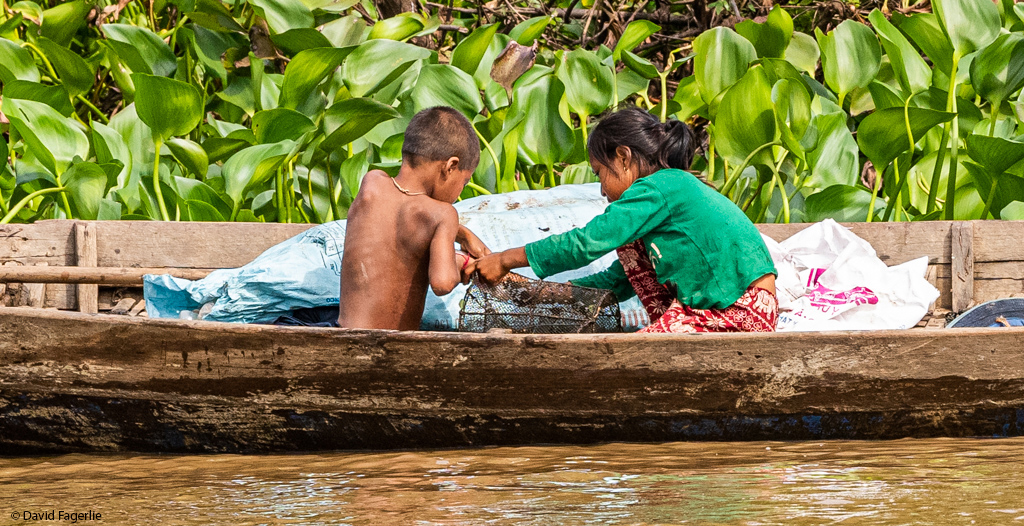
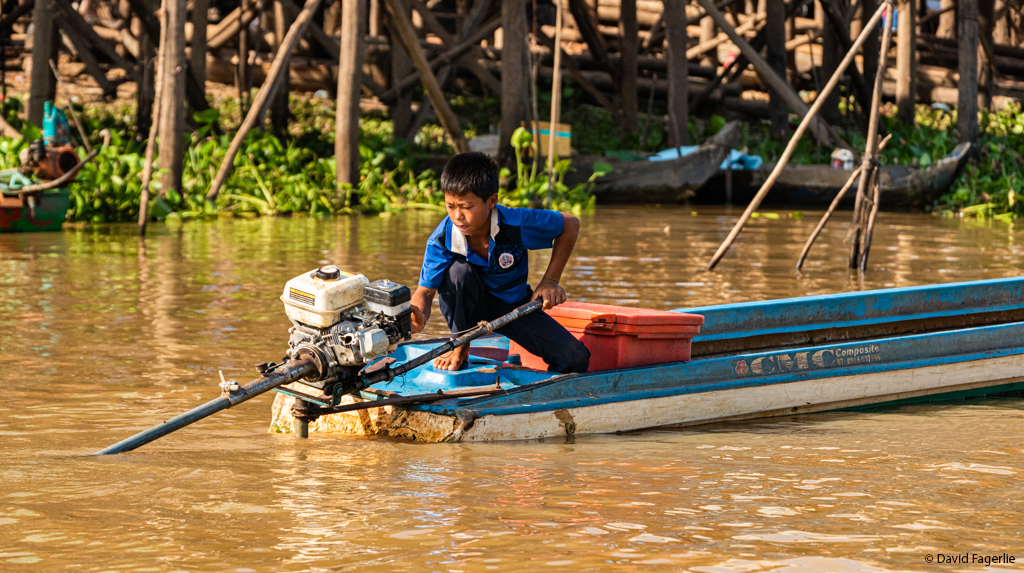

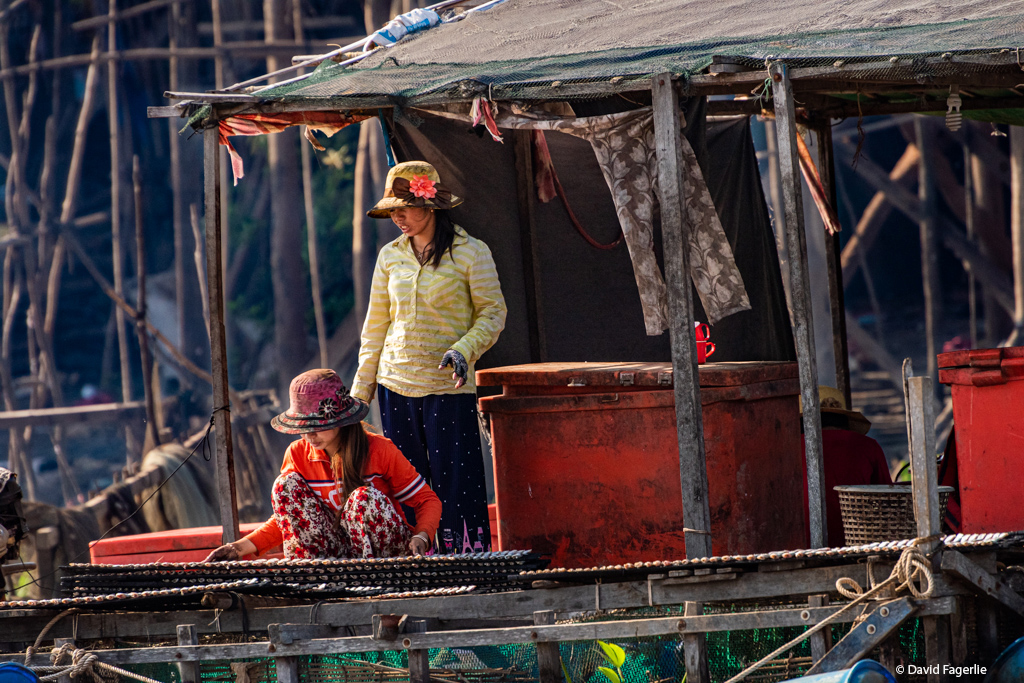

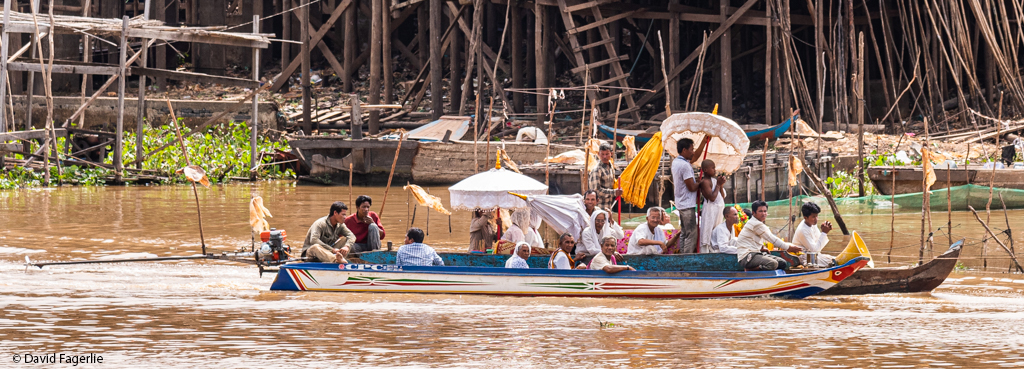
In Tonlé Sap Lake there are floating villages. In all, 1.2 million people live on the lake. We traveled on a tributary from Kampong Kleang to the lake, along the way passing farming and fishing.

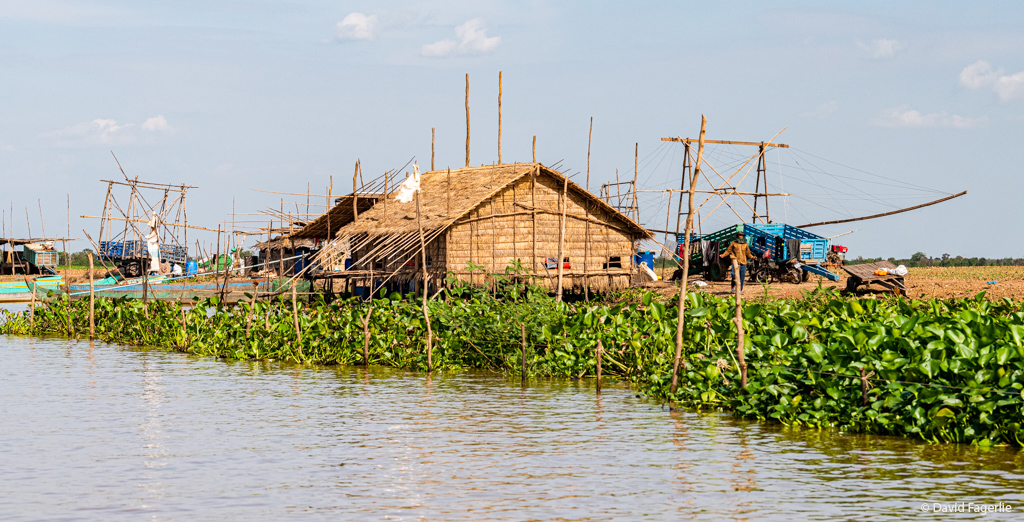
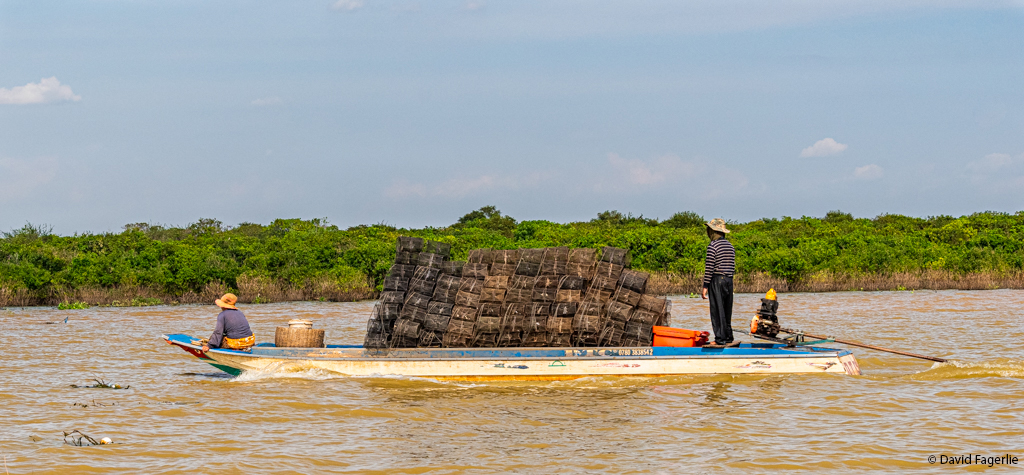

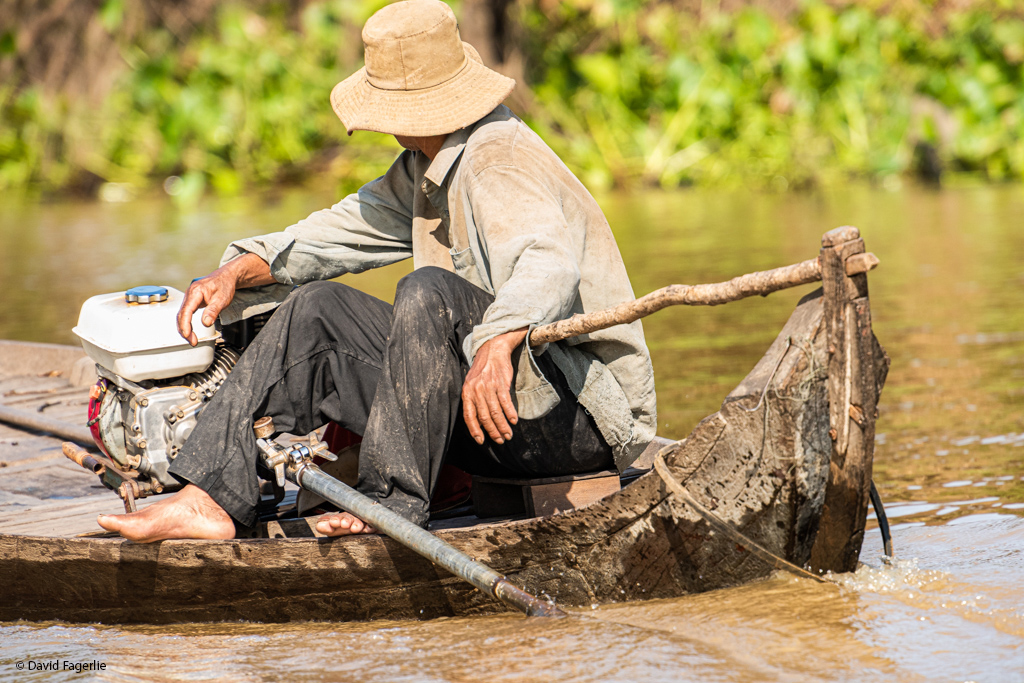
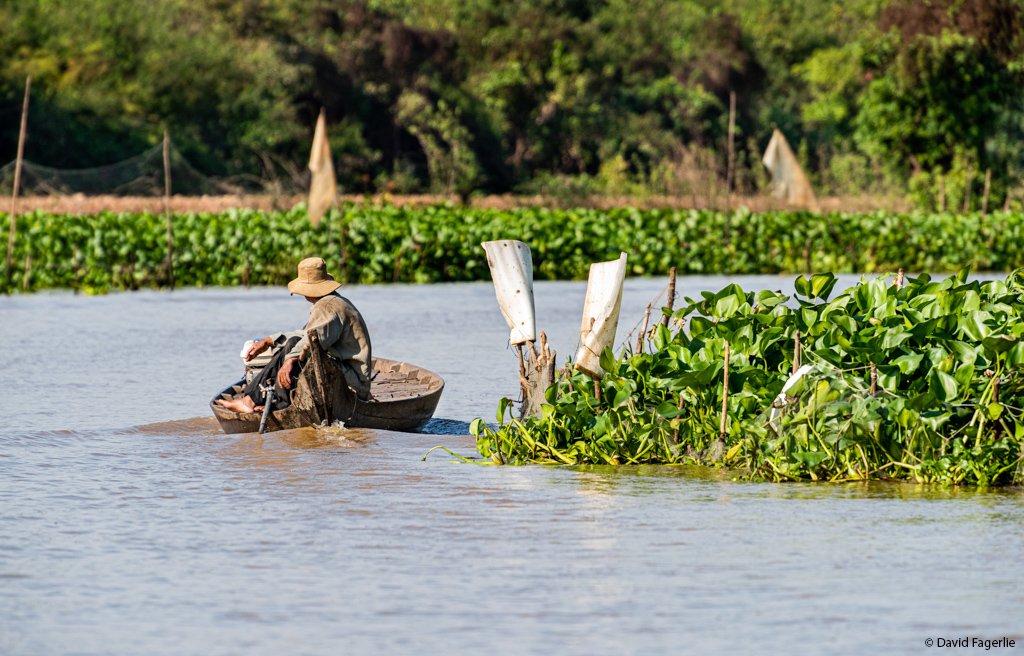
We visited one of many floating villages that is inhabited entirely by Vietnamese immigrants, most if not all undocumented. The village is self-sustaining. Typically in the floating villages there is no piped in water or electricity. Although I don’t recall seeing any electrical wires, if you look closely, in one of the photos below there is proof of cell phone coverage; phones would have to be charged somewhere? The New York Times has an excellent article with aerial videos of the lake culture titled “A people in Limbo, Many Living Entirely on the Water,” published March 28, 2018; check it out.
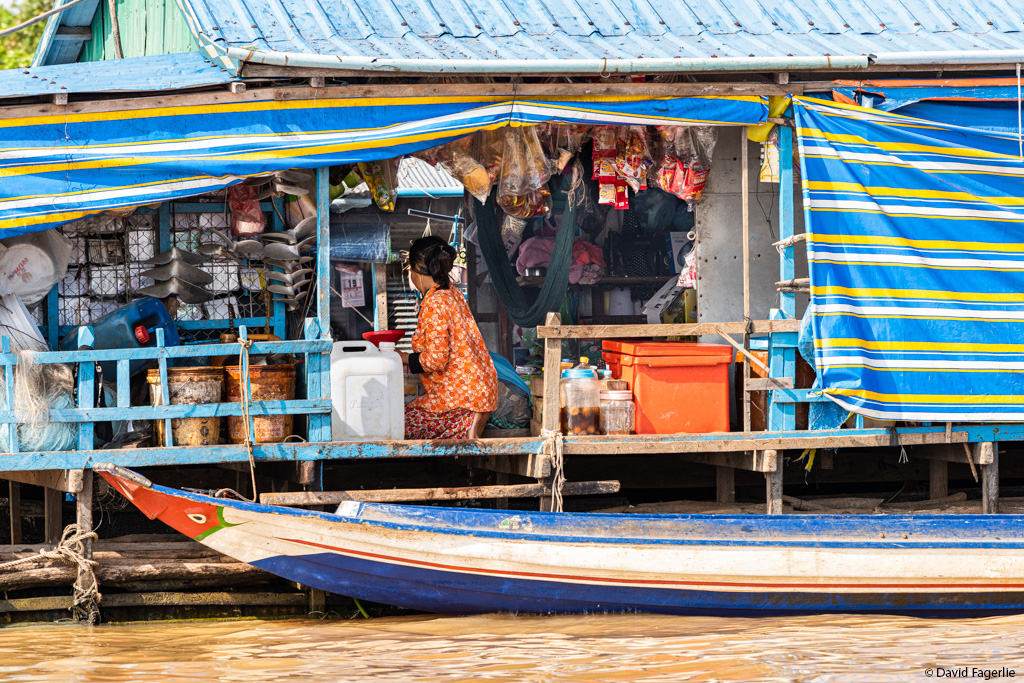
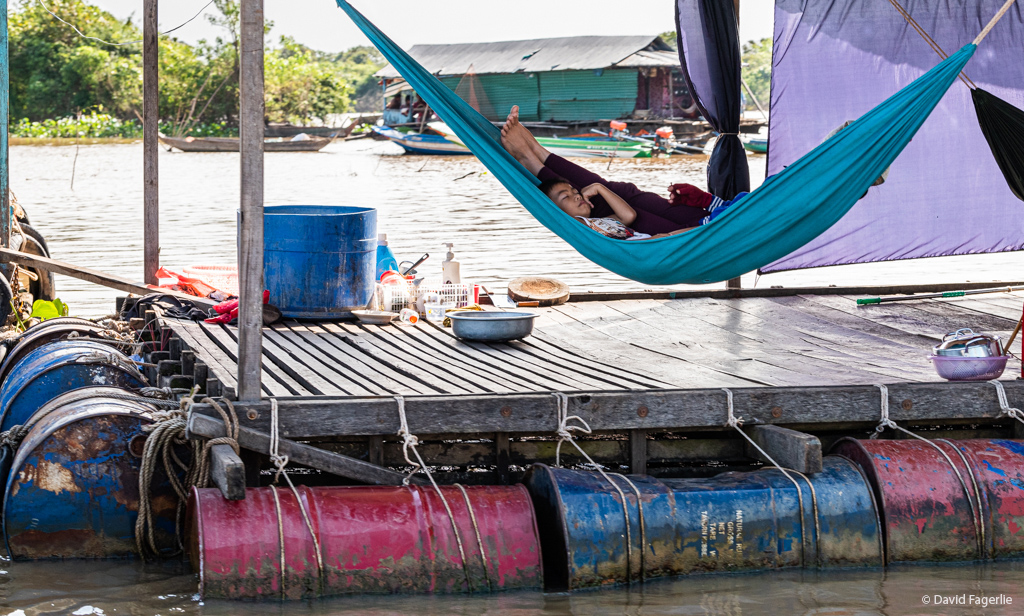
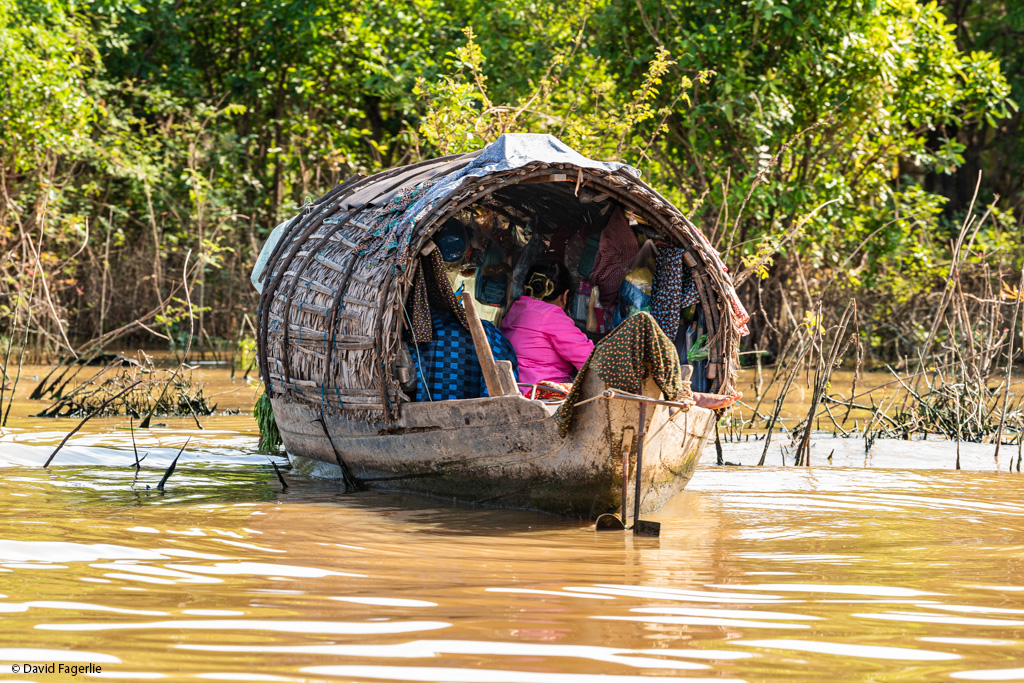
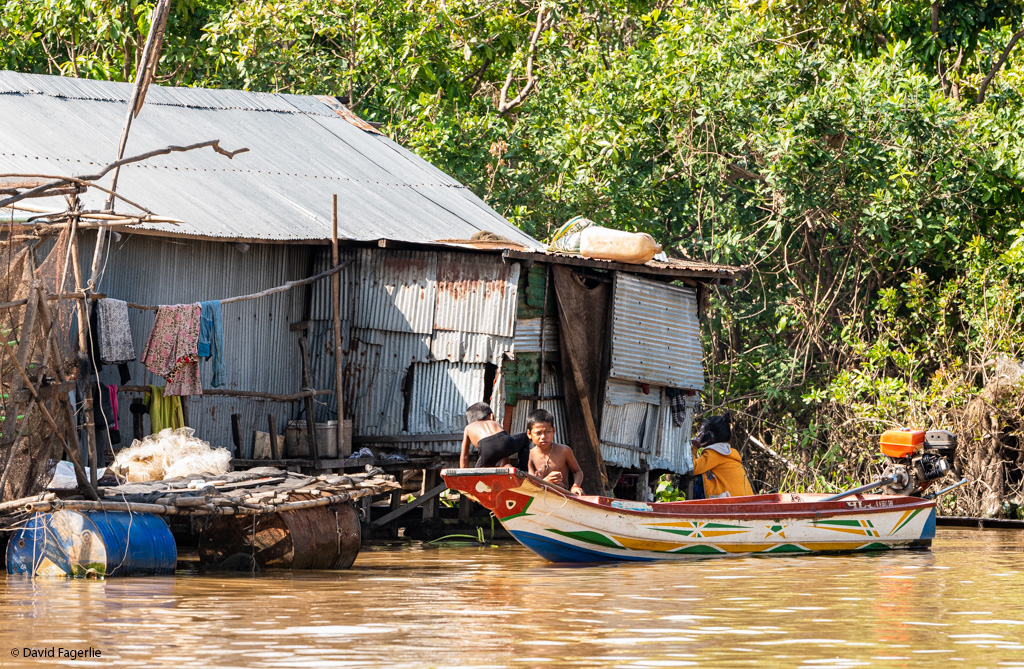
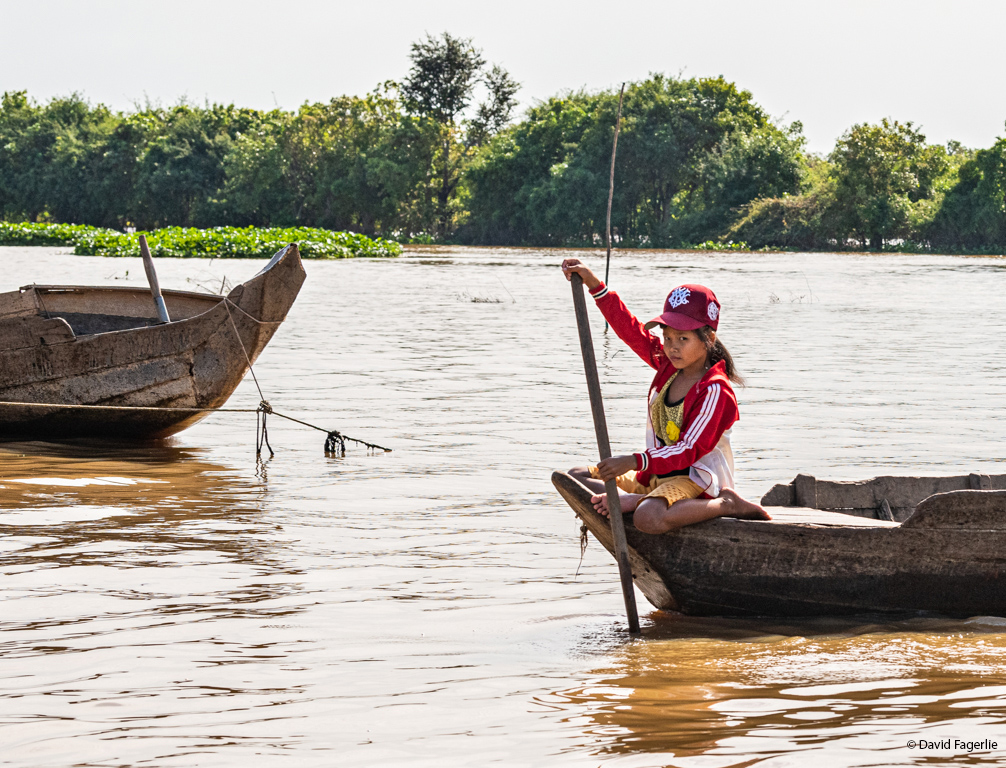
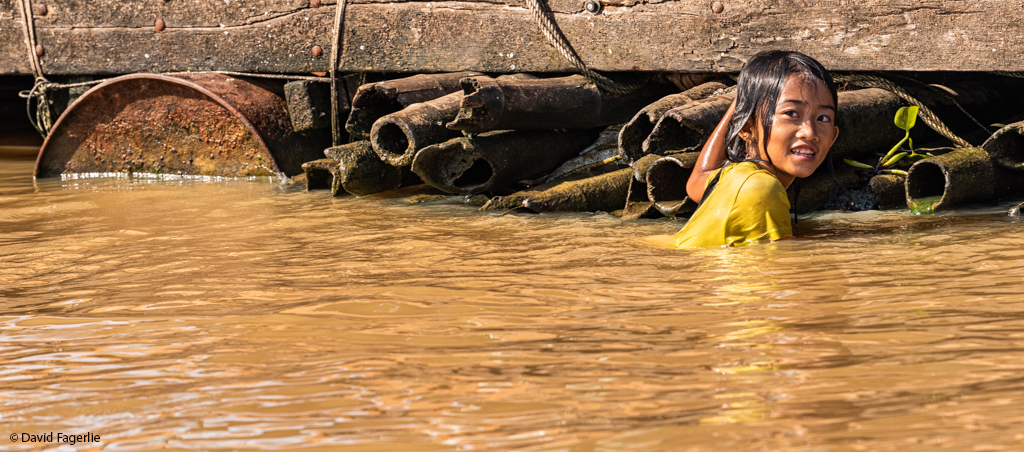
Next Monday we venture into the farming area of Cambodia near Tonlé Sap, visit a national park and begin our adventure into the Angkor Archeological Park. See you then.
As always, a higher resolution slide show is available in Galleries. You can access the gallery for this chapter directly by clicking HERE.

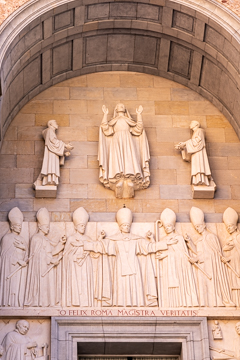
October 02, 2020
Chapter 2: Angkor Thom
Eighty-two percent of Cambodia is rural, ranging from people living on the lake, to jungles, to farmland.